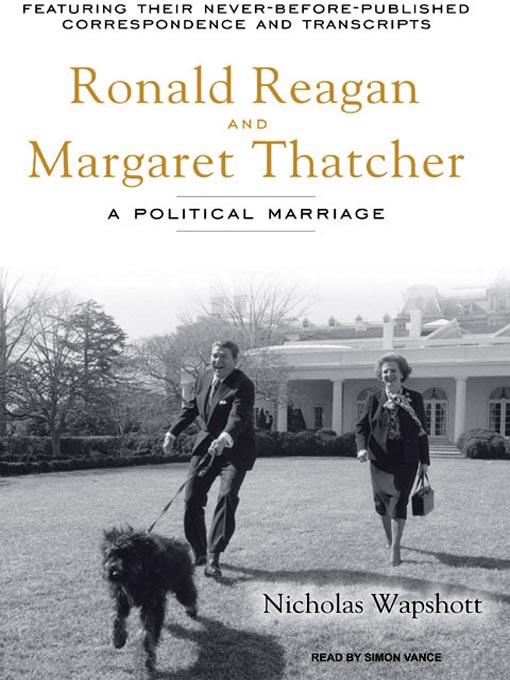
Ronald Reagan and Margaret Thatcher
A Political Marriage
فرمت کتاب
audiobook
تاریخ انتشار
2007
نویسنده
Simon Vanceناشر
Tantor Media, Inc.شابک
9781400175901
کتاب های مرتبط
- اطلاعات
- نقد و بررسی
- دیدگاه کاربران
نقد و بررسی

Ronald Reagan and Margaret Thatcher first met in April 1975, before either became a national leader. Both were political loners with strong beliefs, and they developed an affection and devotion to each other through working together. Simon Vance straddles the gap between presenting history and creating a dramatic story with a cultured narrative voice and easily recognizable voices for the two main figures that capture their personalities perfectly. His approach makes for an interesting listen that doesn't distract from the details. Nicholas Wapshott is a fan of Reagan and Thatcher but doesn't hesitate to illustrate their conflicts on the Falklands, Grenada, and nuclear disarmament. Wapshott offers some good lessons on political partnership. J.A.S. (c) AudioFile 2008, Portland, Maine

September 24, 2007
White House press secretary James Brady once declared “t took a crowbar” to separate President Reagan and Prime Minister Thatcher. Biographer Wapshott (Thatcher
) assesses the nature of that sometimes testy but always close freindship. As Reagan put it, they were “soul mates when it came to reducing government and expanding economic freedom.” Not content with biography, Wapshott also provides a political history of the post-WWII period and the 1980s. Elected under similar circumstances, the two faced many of the same trials: assassination attempts, striking workers and tensions with the Soviet Union. Wapshott's attention to Reagan and Thatcher's compatibility sometimes comes at the expense of a deeper analysis of the ideas that united them. On their economic conservatism, Wapshott is insightful and exhaustive; on the ideas driving their foreign policy, he is less thorough, and more detailed comparison of Thatcher's cold Methodism and Reagan's sense of God's purpose after his attempted assassination would have been welcome. Throughout, Wapshott favors the nitty-gritty, painting a portrait of the friendship that shaped the 1980s and the alliance that won the Cold War.

























دیدگاه کاربران